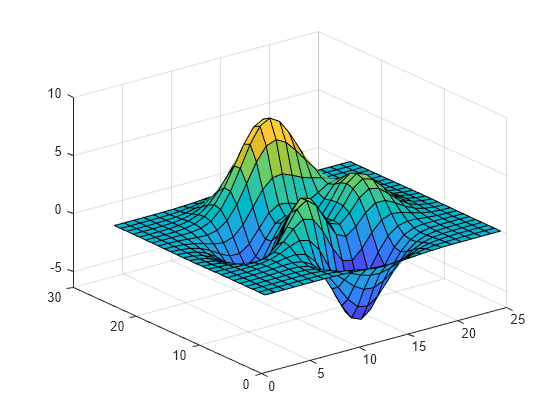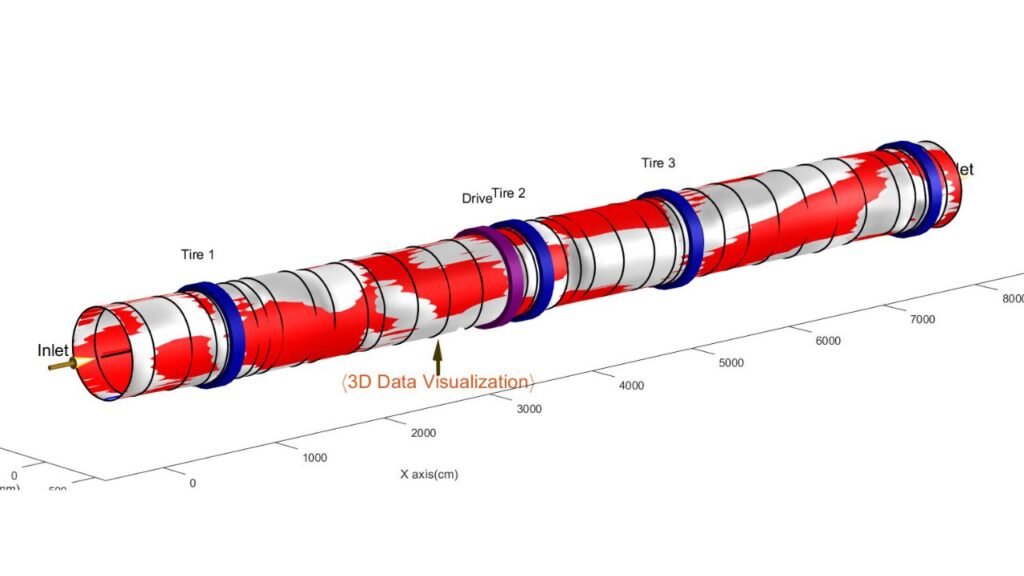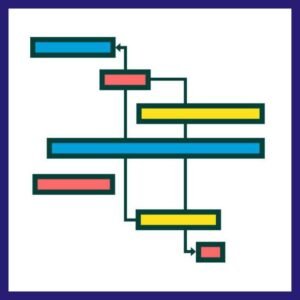Applications of MATLAB
MATLAB, short for “Matrix Laboratory,” is a high-level programming language and interactive environment designed primarily for its applications in numerical computation, visualization, and programming. Established in the late 1970s by Cleve Moler, MATLAB initially served as a simple interface for accessing LINPACK and EISPACK, two libraries focused on matrix computations. Over the years, MATLAB has evolved significantly, becoming a mainstream tool widely adopted across various industries, including engineering, finance, and academia.
The core functionality of MATLAB encompasses a variety of mathematical operations, such as matrix manipulations, algorithm implementation, and data visualization. Users can perform simple calculations as well as complex numerical modeling, simulations, and analyses with its rich suite of toolboxes and built-in functions like MATLAB ode45, and diff function to solve differential equations. The platform supports various programming paradigms, enabling developers to create their own functions and scripts or utilize pre-existing libraries tailored for specific fields.
One of the distinguishing features of MATLAB is its user-friendly programming environment, which integrates a command window for executing commands and a workspace for managing data. The ability to visualize data graphically through 2D and 3D plots adds to its utility, allowing engineers and scientific researchers to interpret results efficiently. With its vast array of applications of MATLAB, users can tackle challenges ranging from control system design and signal processing to image analysis and machine learning.
The appeal of MATLAB is not limited to its technical capabilities. Its extensive documentation, active user community, and comprehensive support options contribute significantly to its popularity among professionals and students alike. As a powerful tool for problem-solving, MATLAB facilitates breakthroughs in research and practical applications, solidifying its position as an essential resource for engineers, scientists, and researchers across the globe.

Core Functions and Features of MATLAB
MATLAB, an acronym for Matrix Laboratory, is a high-performance language primarily focused on numerical computing. One of its core strengths lies in its proficiency with matrix manipulations, a fundamental requirement in various scientific and engineering disciplines. The applications of MATLAB extend across multiple industries, demonstrating its versatility in tackling complex mathematical problems through straightforward syntax and powerful built-in functions.
One of the defining features of MATLAB is its extensive library of mathematical functions that facilitate data analysis and visualization. This capability allows users to perform operations like signal processing, statistical analysis, and optimization seamlessly. The environment is designed to handle data from multiple sources, which supports various data formats and enables efficient data manipulation. Additionally, MATLAB provides numerous built-in tools that aid in data visualization, making it easier for users to interpret results graphically, thus enhancing their analytical capabilities.
Furthermore, MATLAB supports programming and algorithm development through its high-level language, offering a customizable environment for users. It allows for rapid prototyping, which is crucial for endorsing innovations in multiple domains, such as robotics, telecommunications, and finance. The platform’s ability to integrate with other programming languages, such as C, C++, Octave and Python, broadens the spectrum of its applications. This integration ensures that MATLAB can be effectively employed in diverse software development frameworks.
Another important feature of MATLAB is its capability for handling large-scale computations efficiently. Thanks to its underlying architecture, users can execute complex simulations and data-intensive tasks without sacrificing performance. This performance efficiency positions MATLAB as an indispensable tool in industries reliant on high levels of computational power.
Learn MATLAB with Online Tutorials
Explore our MATLAB Online Tutorial, your ultimate guide to mastering MATLAB! Whether you’re a beginner or an advanced user, this guide covers everything from basic MATLAB concepts to advanced topics
Major MATLAB Applications Across Various Industries
MATLAB, a high-performance language for technical computing, has established itself as an invaluable tool across diverse sectors, including aerospace, automotive, healthcare, and finance. Its comprehensive environment for algorithm development, data analysis, and visualization makes it an essential software platform for engineers and scientists alike. One significant application of MATLAB in the aerospace industry is in the area of flight simulation. Engineers utilize its powerful capabilities to model flight dynamics and optimize aircraft performance, which is crucial for testing and validation before any physical prototype is built.
In the automotive sector, MATLAB plays a crucial role in developing advanced driver-assistance systems (ADAS) and autonomous vehicle technology. Through simulations, engineers can assess vehicle dynamics, safety features, and energy efficiency. MATLAB’s robust predictive analytics tools allow for extensive testing of algorithms for real-time decision-making in complex environments. Additionally, MATLAB’s integration with hardware enables real-time testing and prototyping, ensuring that automotive designs meet safety and performance standards.
The healthcare industry has also seen remarkable applications of MATLAB, particularly in medical imaging and diagnostics. Researchers leverage its capabilities for developing algorithms that enhance image processing, facilitating more accurate detection of conditions such as tumors in radiology. Signal processing functionalities are used to analyze EEG and ECG data, contributing to better patient monitoring and management.
Finally, in the finance sector, MATLAB is widely employed for risk management and financial modeling. Its data visualization tools assist analysts in understanding market trends, while simulation techniques inform strategies for investment and portfolio optimization. The applications of MATLAB in these various industries demonstrate its versatility and essential role in driving innovation and efficiency across the board.
Extending Deep Learning Workflows with MATLAB
MATLAB has emerged as a powerful platform for supporting deep learning initiatives across various domains. Its user-friendly interface, combined with extensive built-in tools, facilitates the implementation of neural networks and enhances the development of deep learning workflows. One significant advantage of utilizing MATLAB is its seamless integration with computer vision, image processing, and audio analytics, enabling developers to craft sophisticated models that cater to a diverse range of applications.
In the realm of computer vision, MATLAB provides advanced functionalities that allow for processing and analyzing visual data efficiently. This is particularly beneficial for tasks such as object detection, image classification, and automated video analysis. With the ability to leverage deep learning algorithms, users can easily harness pre-trained networks or create their custom architectures, thus expediting the model training process. Furthermore, MATLAB’s support for augmented data helps improve the robustness of the models, making them less prone to overfitting.
Similarly, in the domain of image processing, MATLAB stands out by offering specialized functions tailored for handling various types of images. Users can easily preprocess their data, apply filtering techniques, and conduct transformations to prepare their datasets for deep learning applications. The combination of these capabilities leads to enhanced performance of neural networks, particularly for applications in biomedical imaging, remote sensing, and industrial inspection.
In addition, when it comes to audio analytics, MATLAB facilitates the analysis of sound signals employing deep learning models. It allows for the extraction of relevant features, enabling classification of audio data for applications like speech recognition or music genre classification. By merging these disciplines, MATLAB exemplifies its versatility in supporting deep learning workflows and provides a comprehensive environment for researchers and engineers to develop and optimize their projects effectively.
MATLAB in Image and Signal Processing
MATLAB is a powerful tool widely utilized in image and signal processing, offering extensive functionalities that enhance the ability to analyze and manipulate complex data sets. Its rich set of libraries and built-in functions facilitate remarkable advancements across various fields, particularly in medical imaging and telecommunications.
In the medical field, MATLAB is essential for processing images captured through techniques such as MRI, CT scans, and ultrasound. For instance, algorithms developed in MATLAB can help improve the clarity and resolution of images, enabling healthcare professionals to identify abnormalities more effectively. In a clinical setting, this capability is vital for accurate diagnostics and patient care. Moreover, the ability to automate the analysis of large volumes of imaging data significantly reduces the workload for medical practitioners, ultimately contributing to better patient outcomes.
Similarly, in the telecommunications sector, MATLAB plays a crucial role in the enhancement of signal quality and the optimization of data transmission. It enables engineers to design and simulate various communication systems, identifying potential issues in signal integrity and performance before actual implementation. Techniques such as filtering, modulation, and demodulation can be effectively modeled in MATLAB, allowing for the efficient processing of signals. Additionally, MATLAB’s robust visualization tools assist in capturing and interpreting complex data trends within the signals, enabling stakeholders to make informed decisions based on empirical data.
The applications of MATLAB in these domains underscore its versatility and significance in managing and improving the processing of images and signals. By employing its advanced analytical and computational capabilities, professionals can tackle challenging tasks in image and signal processing, paving the way for innovations and advancements across industries.
Need Help in Programming?
I provide freelance expertise in data analysis, machine learning, deep learning, LLMs, regression models, NLP, and numerical methods using Python, R Studio, MATLAB, SQL, Tableau, or Power BI. Feel free to contact me for collaboration or assistance!
Follow on Social

Automated Driving Solutions with MATLAB
In recent years, the development of automated and autonomous driving systems has gained significant momentum, largely driven by advancements in technology and the need for safer transportation solutions. MATLAB, a high-performance language for technical computing, plays a critical role in this evolution. Engineers utilize MATLAB to design, simulate, and analyze various components essential for automated driving technologies.
One primary application of MATLAB in this domain is in the creation of simulation models. Engineers can use MATLAB to establish a virtual environment that mimics real-world driving conditions. This allows for the testing of algorithms and vehicle behavior without the risks associated with physical testing. By simulating different scenarios, such as adverse weather conditions or sudden obstacles, developers can validate the effectiveness of their autonomous driving algorithms systematically.
Moreover, MATLAB supports algorithm development through its extensive libraries and tools. Engineers can develop complex algorithms that govern decision-making processes in automated vehicles. These algorithms integrate data from various sensors, including cameras, LiDAR, and radar, to interpret the vehicle’s surroundings. MATLAB’s capabilities allow for rapid prototyping, enabling developers to iterate and improve their algorithms efficiently through a streamlined workflow.
Additionally, testing safety features is paramount for automated driving systems. Engineers leverage MATLAB’s functionalities to conduct rigorous testing and validation of safety algorithms. By modeling various failure modes and scenarios, they can ensure that vehicles respond safely and effectively to potential hazards. This comprehensive testing powered by MATLAB not only enhances the reliability of automated driving systems but also facilitates compliance with regulatory standards, a crucial aspect as the industry moves towards broader deployment of autonomous vehicles.
Natural Language Processing and Text Analytics in MATLAB
MATLAB has emerged as a powerful tool for natural language processing (NLP) and text analytics, providing various functionalities to handle, analyze, and extract meaningful insights from textual data. The applications of MATLAB in this domain are wide-ranging, thanks to its rich set of built-in functions and toolbox extensions tailored for text analysis.
One prominent application is sentiment analysis, where MATLAB facilitates the analysis of opinions expressed in text data. By employing machine learning techniques, users can build models capable of categorizing text into positive, negative, or neutral sentiments. This capability is invaluable for businesses that seek to understand customer reviews, feedback, and social media interactions, allowing them to gauge public perception and adjust their strategies accordingly.
Additionally, MATLAB supports the development of chatbots and conversational agents. The integration of natural language processing algorithms enables these systems to comprehend user inputs more effectively and respond with contextually relevant replies. This application is increasingly important as organizations strive to enhance customer service efficiency and provide 24/7 support. Through the use of MATLAB’s deep learning toolbox, developers can train sophisticated models that improve over time, adapting to the nuances of human language.
Another critical application of MATLAB in text analytics is data mining, where the software aids in extracting patterns and relationships from large volumes of unstructured text. By leveraging tools such as clustering and topic modeling, users can uncover hidden insights and trends within their textual datasets. These capabilities are particularly beneficial for industries like healthcare, finance, and marketing, where understanding large quantities of text is essential for informed decision-making.
In conclusion, the applications of MATLAB in natural language processing and text analytics are extensive, providing tools for sentiment analysis, chatbot development, and data mining. As industries continue to generate vast amounts of textual data, MATLAB’s capabilities will remain crucial for deriving actionable insights and enhancing user engagement.
Applications of MATLAB in Computational Finance
The finance industry has increasingly embraced advanced computational tools to enhance decision-making and analytical capabilities. Among these tools, MATLAB has emerged as a preferred platform for numerous financial applications, showcasing its versatility and robust functionality. One of the primary applications of MATLAB lies in risk management, where financial analysts utilize its powerful computing capabilities to evaluate and mitigate financial risks. By deploying complex algorithms, financial professionals can simulate various scenarios, assess the impact of potential market fluctuations, and devise strategies to protect investments.
Another significant area of focus is quantitative analysis, which requires high-level mathematical computations and model implementations. MATLAB provides finance experts with the necessary tools for developing sophisticated models that can assess the performance of different assets and portfolios. With its extensive library of financial functions and data analysis tools, users can perform regression analysis, optimization, and scenario analysis with ease. These capabilities are invaluable when formulating trading strategies and assessing the potential returns and risks associated with various investment options.
Algorithmic trading represents another key application of MATLAB within the finance sector. Financial institutions leverage its capabilities to develop and backtest trading algorithms that execute orders based on certain criteria or market conditions. Therefore, MATLAB facilitates the optimization of these algorithms, allowing traders to refine their strategies based on historical data and market behavior. A case study involving a hedge fund illustrates how MATLAB was instrumental in creating an algorithmic trading system that successfully identified inefficiencies in the market, leading to substantial improvements in trade execution and profitability.
In conclusion, the applications of MATLAB in computational finance are extensive and continue to grow. From risk management and quantitative analysis to algorithmic trading, its flexibility and strength in dealing with complex financial models make it an indispensable tool in today’s fast-paced financial markets.
Conclusion: The Future of MATLAB Applications
As technology continues to advance at an unprecedented pace, the applications of MATLAB are poised to expand and evolve significantly. The software’s robust computational capabilities make it an essential tool not just for academic researchers, but also for industries that require high-performance numerical computing and complex data analysis. In particular, the rise of artificial intelligence and machine learning has opened new avenues for the utilization of MATLAB, enhancing its relevance across various sectors.
In the realm of AI and machine learning, MATLAB offers a comprehensive environment for algorithm development, data analysis, and modeling. Engineers and data scientists can leverage the software’s versatility to develop innovative solutions that tackle real-world problems, from predictive analytics in healthcare to automation in manufacturing. With features like deep learning toolboxes and optimization solvers, the applications of MATLAB in designing intelligent systems are becoming increasingly pronounced.
Looking towards the future, we can also anticipate that MATLAB will integrate further with emerging technologies such as the Internet of Things (IoT) and big data analytics. As industries continue to collect vast amounts of data, the ability of MATLAB to process and analyze this information will increase its significance in domains such as energy, finance, and telecommunications. Moreover, the community around MATLAB fosters collaboration, sharing, and knowledge transfer, which will likely spur further innovations in its functionalities.
In conclusion, the future of MATLAB applications appears bright, as its adaptability and powerful features will cater to the evolving requirements of both research and industry sectors. The continuous enhancement of MATLAB, especially in the fields of AI and machine learning, positions it as a vital asset for those striving to harness the full potential of data-driven insights. As we look ahead, the diversity of MATLAB applications will undoubtedly broaden, solidifying its role as a cornerstone in modern computational practices.
AlgorithmMinds has always been eager to take on complex challenges at hand.
And Matlab has always proven to be a powerful programming tool for solving these challenges. A few practical applications of Matlab are

Few Practical Applications of Matlab
Researchers and developers widely use Matlab as a computational tool in all industrial engineering and computational biology streams.
MATLAB Applications in Data Visualization
With the emerging fourth industrial revolution, industries are implementing cutting-edge technologies such as cloud manufacturing, the Internet of Things (IoT), cyber-physical systems, and big data analytics. This digital revolution is marked by technology that takes advantage of Big Data and Artificial Intelligence (AI) to nurture automatic learning systems.
The importance of data visualization as a tool is widespread, but many industries don’t have the necessary skills and knowledge – perhaps solutions are still complex to be globally adopted.
The AlgorithmMinds innovative approach and advanced functionalities of Matlab allow end-user to apply data visualization in an industrial environment with an interactive and user-friendly solution.

MATLAB Applications in Machine Learning
Machine learning has become a pivotal tool for many projects in computational biology, bioinformatics, and health informatics. Biotech companies are using ML extensively to predict and classify important features for disease identification.
Recent advances in high-throughput sequencing technologies (including DNA and RNA) require computational methods to perform data mining and predictions. These methods can lead to breakthrough biological discoveries. Matlab has become a handy and popular computational tool for medical researchers and clinicians. AlgorithmMinds studied the impact of different machine-learning algorithms to classify five different types o cancer tumors using RNA-Seq (HiSeq) data.
By effectively using Matlab’s functionalities for machine learning and audio processing, AlgorithmMinds built an effective tool that can classify different types of speaking disorders.
MATLAB Applications in Mathematical Modeling
How do populations grow? Or do viruses spread? And what is the trajectory of a glider? Many real-life problems can be described and solved by mathematical models. Applied Mathematical Modelling focuses on developing mathematical models of engineering or environmental processes and industrial systems.
Reactor modeling on Matlab can prove to be an effective tool in the design and scale-up phase of commercial reactors, enabling the prediction of the system behavior under different operating conditions without the need for expensive and time-consuming experimentation.
MATLAB Applications in Project Schedule Optimization
Due to its complexity and challenging nature, Scheduling has become one of the most famous research topics within the operational research context. It has been widely researched in practical applications within various industries, especially manufacturing, construction, and computer engineering.
A scheduling system involves, Modeling the problem, Selecting a solution approach for schedule optimization, and Implementing an optimizing algorithm through programming tools like Matlab or Python.
Mostly, these algorithms require complex solutions to handle data in time or date format. AlgorithmMinds always comes with an innovative and creative approach to designing such complex algorithms on Matlab.

Matlab Applications in Numerical Analysis
Numerical analysis is the study of algorithms that use numerical approximation for the problems of mathematical analysis. These analyses have practical applications in engineering, computational finance, and computational biology.
Matlab provides a range of numerical methods and the ability to develop your methods from scratch. Furthermore, Proglabhelper has programmed scripts to generate complex derivations symbolically.
This approach allows the end-user to study derivations at every stage of algorithm execution.